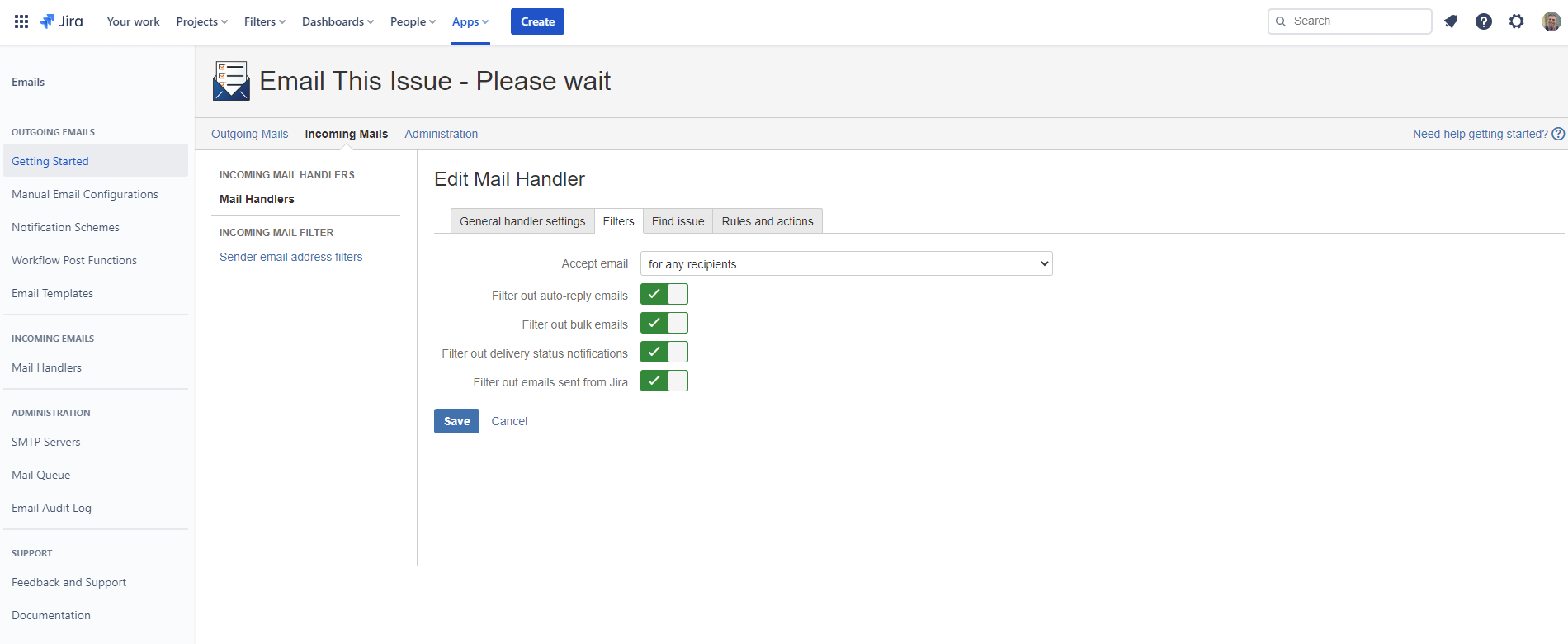Thank you for visiting our old product documentation site. Note that we are in the process of migrating our product documentation and soon we will not store or update our documentation here.Please navigate to our new documentation site and update your bookmarks accordingly. If you're looking for the former content of this page, click here. |
Filtering incoming messages is important to avoid unwelcome use-cases, like spamming from certain addresses. Regarding this, Email This Issue provides you with options to cover some frequent needs.
Filters are used during the mail fetching phase. This means, if a mail is filtered out by these filters, it will not be enqueued for processing.
From a higher level perspective, filters can be categorized as follows: There are filters, that work in a global scope (e.g. sender address filters) and there are filters, whose scope is restricted to a given Mail Handler. In this document, you can read about Mail Handler-related filters.
In order to fine-tune filtering behavior, two categories of filters come into action:
Accept (or pass-through) filters to restrict or customize, which messages should specifically arrive to the Mail Handler’s processing phase (but not others).
Reject filters to control, which messages should be filtered out for any case and not arrive the Mail Handler’s processing phase.
Filters can be configured on the Filters tab:
Accept filters
Accept email can be used to filter messages in a mailbox, if it has multiple email addresses (like mail aliases).
The following options are available:
If Accept email is set to for any recipients (default setting), all messages will be passed through, regardless of the recipient addresses.
If Accept email is set to if any recipient equals to any of the following addresses then email will be processed only if the To/CC/BCC address of the email equals to any of the specified email addresses.
For example, if you have a mailbox support@example.com with aliases support@example.net and support@example.org and you want to process only emails sent to example.net or example.org (not example.com), then add two lines in the appearing text area:
support@example.net
support@example.orgIf Accept email is set to if any recipient matches any of the following regular expressions then email will be processed only if To/CC/BCC address matches with any of the specified regular expressions.
For example, if you have a mailbox with addresses info1@example.com, info2@example.com, support1@example.com, support2@example.com and want to process email that are sent to addresses starting with support, then add this line in the appearing text area (note that dot is escaped before .com):
support(*.)@example\.com
Reject filters
These are classical filters. If any of the activated filter conditions proves true, the incoming message will be completely ignored from further processing:
Filter out auto-reply emails: All emails, which have the header "Auto-Submitted" with a value other than no, will be considered as auto-reply and will be filtered out if this filter is enabled.
Filter out bulk emails: It checks whether the Precedence header with the value "bulk" is set in the email.
Filter out delivery status notifications: This filter checks if the content type is multipart/report and contains "report-type=delivery:status".
Filter out emails sent from JIRA: Filters out emails sent from a Jira or Email This Issue Cloud instance. It checks the presence of X-JIRA-Fingerprint and X-JETI-Fingerprint headers and filters the email if any of them is present.
